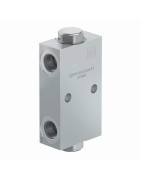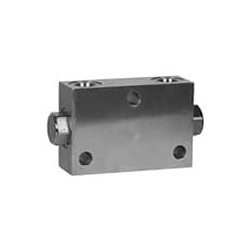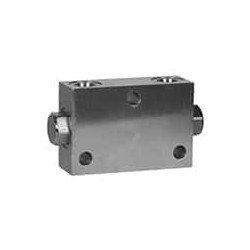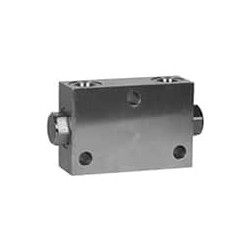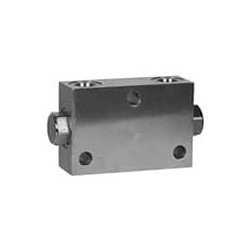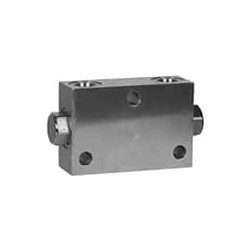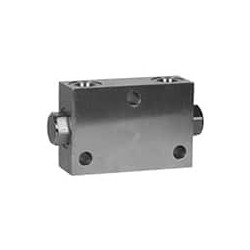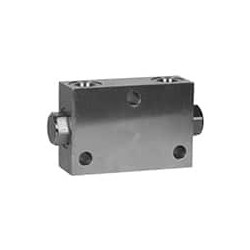Pilot Piston Style Dual Pilot Operated Check Valves
Parker’s dual pilot operated check valves are available in pressures up to 5000 PSI and flow rates as high as 50 gallons per minute. The CDP(H) series uses a standard pilot piston and two standard Parker check valves in an assembled body.
At rest the check valves remain seated, blocking flow from entering and exiting the cylinder and locking the cylinder in place. When system pressure is applied to either valve port, the check valve will open allowing free flow from the inlet to the actuator port across the check valve. As pressure builds to shift the cylinder, the internal pilot piston, utilizing a 3:1 or 4:1 ratio, will respond quickly to the system pressure and will shift against the return check. This action mechanically pilots the valve open to allow return flow to pass through the valve from the actuator back to tank. With both ports now open, the valve is unlocked and the hydraulically powered cylinder is free to move. When system pressure is shut off to the valve, the valve will return to the holding condition restricting actuator movement and locking the system in place.
These valves are ideal for load holding applications, where metering conditions are not required.
At rest the check valves remain seated, blocking flow from entering and exiting the cylinder and locking the cylinder in place. When system pressure is applied to either valve port, the check valve will open allowing free flow from the inlet to the actuator port across the check valve. As pressure builds to shift the cylinder, the internal pilot piston, utilizing a 3:1 or 4:1 ratio, will respond quickly to the system pressure and will shift against the return check. This action mechanically pilots the valve open to allow return flow to pass through the valve from the actuator back to tank. With both ports now open, the valve is unlocked and the hydraulically powered cylinder is free to move. When system pressure is shut off to the valve, the valve will return to the holding condition restricting actuator movement and locking the system in place.
These valves are ideal for load holding applications, where metering conditions are not required.
